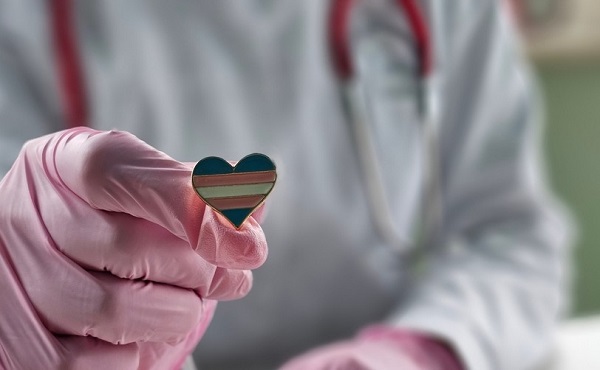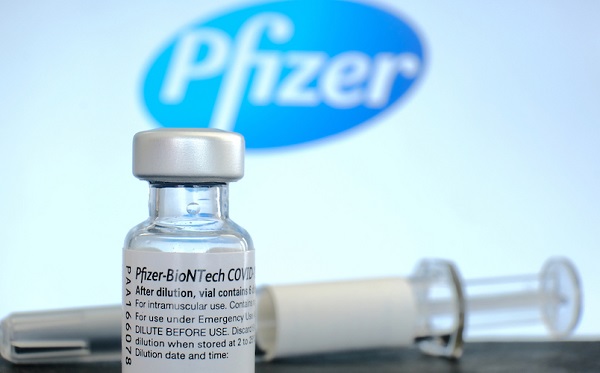Health
Prostate Cancer: Over-Testing and Over-Treatment

From the Brownstone Institute
By
The excessive medical response to the Covid pandemic made one thing abundantly clear: Medical consumers really ought to do their own research into the health issues that impact them. Furthermore, it is no longer enough simply to seek out a “second opinion” or even a “third opinion” from doctors. They may well all be misinformed or biased. Furthermore, this problem appears to predate the Covid phenomenon.
A striking example of that can be found in the recent history of prostate cancer testing and treatment, which, for personal reasons, has become a subject of interest to me. In many ways, it strongly resembles the Covid calamity, where misuse of the PCR test resulted in harming the supposedly Covid-infected with destructive treatments.
Two excellent books on the subject illuminate the issues involved in prostate cancer. One is Invasion of the Prostate Snatchers by Dr. Mark Scholz and Ralph Blum. Dr. Scholtz is executive director of the Prostate Cancer Research Institute in California. The other is The Great Prostate Hoax by Richard Ablin and Ronald Piana. Richard Ablin is a pathologist who invented the PSA test but has become a vociferous critic of its widespread use as a diagnostic tool for prostate cancer.
Mandatory yearly PSA testing at many institutions opened up a gold mine for urologists, who were able to perform lucrative biopsies and prostatectomies on patients who had PSA test numbers above a certain level. However, Ablin has insisted that “routine PSA screening does far more harm to men than good.” Moreover, he maintains that the medical people involved in prostate screening and treatment represent “a self-perpetuating industry that has maimed millions of American men.”
Even during approval hearings for the PSA test, the FDA was well aware of the problems and dangers. For one thing, the test has a 78% false positive rate. An elevated PSA level can be caused by various factors besides cancer, so it is not really a test for prostate cancer. Moreover, a PSA test score can spur frightened men into getting unnecessary biopsies and harmful surgical procedures.
One person who understood the potential dangers of the test well was the chairman of the FDA’s committee, Dr. Harold Markovitz, who decided whether to approve it. He declared, “I’m afraid of this test. If it is approved, it comes out with the imprimatur of the committee…as pointed out, you can’t wash your hands of guilt. . .all this does is threaten a whole lot of men with prostate biopsy…it’s dangerous.”
In the end, the committee did not give unqualified approval to the PSA test but only approved it “with conditions.” However, subsequently, the conditions were ignored.
Nevertheless, the PSA test became celebrated as the route to salvation from prostate cancer. The Postal Service even circulated a stamp promoting yearly PSA tests in 1999. Quite a few people became wealthy and well-known at the Hybritech company, thanks to the Tandem-R PSA test, their most lucrative product.
In those days, the corrupting influence of the pharmaceutical companies on the medical device and drug approval process was already apparent. In an editorial for the Journal of the American Medical Association (quoted in Albin and Piana’s book), Dr. Marcia Angell wrote, “The pharmaceutical industry has gained unprecedented control over the evaluation of its products…there’s mounting evidence that they skew the research they sponsor to make their drugs look better and safer.” She also authored the book The Truth About the Drug Companies: How They Deceive Us and What to Do About It.
A cancer diagnosis often causes great anxiety, but in actuality, prostate cancer develops very slowly compared to other cancers and does not often pose an imminent threat to life. A chart featured in Scholz and Blum’s book compares the average length of life of people whose cancer returns after surgery. In the case of colon cancer, they live on average two more years, but prostate cancer patients live another 18.5 years.
In the overwhelming majority of cases, prostate cancer patients do not die from it but rather from something else, whether they are treated for it or not. In a 2023 article about this issue titled “To Treat or Not to Treat,” the author reports the results of a 15-year study of prostate cancer patients in the New England Journal of Medicine. Only 3% of the men in the study died of prostate cancer, and getting radiation or surgery for it did not seem to offer much statistical benefit over “active surveillance.”
Dr. Scholz confirms this, writing that “studies indicate that these treatments [radiation and surgery] reduce mortality in men with Low and Intermediate-Risk disease by only 1% to 2% and by less than 10% in men with High-Risk disease.”
Nowadays prostate surgery is a dangerous treatment choice, but it is still widely recommended by doctors, especially in Japan. Sadly, it also seems to be unnecessary. One study cited in Ablin and Piana’s book concluded that “PSA mass screening resulted in a huge increase in the number of radical prostatectomies. There is little evidence for improved survival outcomes in the recent years…”
However, a number of urologists urge their patients not to wait to get prostate surgery, threatening them with imminent death if they do not. Ralph Blum, a prostate cancer patient, was told by one urologist, “Without surgery you’ll be dead in two years.” Many will recall that similar death threats were also a common feature of Covid mRNA-injection promotion.
Weighing against prostate surgery are various risks, including death and long-term impairment, since it is a very difficult procedure, even with newer robotic technology. According to Dr. Scholz, about 1 in 600 prostate surgeries result in the death of the patient. Much higher percentages suffer from incontinence (15% to 20%) and impotence after surgery. The psychological impact of these side effects is not a minor problem for many men.
In light of the significant risks and little proven benefit of treatment, Dr. Scholz censures “the urology world’s persistent overtreatment mindset.” Clearly, excessive PSA screening led to inflicting unnecessary suffering on many men. More recently, the Covid phenomenon has been an even more dramatic case of medical overkill.
Ablin and Piana’s book makes an observation that also sheds a harsh light on the Covid medical response: “Isn’t cutting edge innovation that brings new medical technology to the market a good thing for health-care consumers? The answer is yes, but only if new technologies entering the market have proven benefit over the ones they replace.”
That last point especially applies to Japan right now, where people are being urged to receive the next-generation mRNA innovation–the self-amplifying mRNA Covid vaccine. Thankfully, a number seem to be resisting this time.
Mental Health
Headline that reads ‘Ontario must pay for surgery to give trans resident both penis and vagina: appeal court’ a sign of the times in Canada

From LifeSiteNews
Gender ideology so entrenched, surgical mutilation is no longer considered fringe
If you’d like a glimpse of what 10 years of progressive rule has done to Canada in a single sentence, I submit to you this April 24 headline: “Ontario must pay for surgery to give trans resident both penis and vagina: appeal court.”
Imagine reading a headline like that in, say, 2010. You’d wonder what country you were living in — that is, if you weren’t trying to figure out what you just read. But in Canada in 2025, this stuff isn’t fringe. It’s establishment.
The Ontario Court of Appeal, the province’s top court, issued a ruling this week stating that the province must pay for a “penile-sparing vaginoplasty” for a resident who identifies as transgender but does not identify “exclusively” as either male or female and thus would like to possess both a penis and a vagina.
According to the Post, “a three-judge panel of the Ontario Court of Appeal confirmed a lower court’s ruling that the novel phallus-preserving surgery qualifies as an insured service under the Ontario Health Insurance Plan.” In case you’re tempted to write this off as an aberration at the hands of a handful of activist judges, this ruling is the third unanimous decision in favor of the “patient,” identified in court records as “K.S.”
“K.S. is pleased with the Court of Appeal’s decision, which is now the third unanimous ruling confirming that her gender affirming surgery is covered under Ontario’s Health Insurance Act and its regulation,” K.S.’s lawyer, John McIntyre, told the Post. K.S., as it turns out, identifies as neither male nor female … but uses female pronouns:
The legal battle between K.S., whose sex at birth was male, dates to 2022, when the Ontario Health Insurance Plan (OHIP) refused her request to pay for the cost of surgery at a Texas clinic to construct a vagina while sparing the penis, a procedure this is not available in Ontario, or anywhere else in Canada. K.S. uses female pronouns but does not identify as either fully female or fully male.
Previously, saner generations would have no idea how to interpret the preceding paragraph, but gender ideology has made fools of us all. OHIP attempted to argue that “because the vaginoplasty would not be accompanied by a penectomy, the procedure isn’t one specifically listed in OHIP’s Schedule of Benefits and therefore shouldn’t be publicly funded” and also that the surgery is “experimental” in Ontario and thus can’t be covered.
But K.S., who has a male member but would also like a neo-vagina, appealed to the Health Services Appeal and Review Board, which overturned OHIP’s decision. OHIP appealed to the Divisional Court but lost; the latest appeal, heard November 26, was also rejected because a “penectomy,” the removal of the penis, was “neither recommended by K.S.’s health professionals nor desired by K.S.,” according to the court’s decision.
I wonder if the judges thought that they’d be ruling on whether a man who identifies as neither a man or a woman was entitled to obtain a vagina while retaining his penis when they were going to law school.
The court stated that K.S., who is in his early 30s, “has experienced significant gender dysphoria since her teenage years, as well as physical, mental and economic hardships to transition her gender expression to align with her gender identity.” Of course, K.S. isn’t “transgender,” per se — because he doesn’t identify as the opposite sex, even though he uses the pronouns of the opposite sex. He wants to be … both, somehow. And he wants the taxpayer to pay for it.
As the Post reported:
K.S.’s doctor submitted a request to OHIP for prior funding approval for the surgical creation of a vaginal cavity and external vulva. The request made it clear that K.S. wasn’t seeking a penectomy. In a letter accompanying the request, her doctor said that because K.S. is “not completely on the ‘feminine’ end of the spectrum” it was important for her to have a vagina while maintaining her penis, adding that the Crane Center for Transgender Surgery in Austin, Tx.,” has an excellent reputation” for gender-affirming surgery, “and especially with these more complicated procedures.”
The surgeries, depending on which are performed, range in cost “from US $10,000 to $70,000.” The court also ordered Ontario to pay K.S. $23,250 after dismissing OHIP’s appeal; the province has until June 23 to seek leave to the Supreme Court of Canada.
Mental Health
Suspect who killed 11 in Vancouver festival attack ID’d

Quick Hit:
Authorities have identified the driver responsible for the devastating attack at Vancouver’s Lapu Lapu Day festival that killed at least 11 and injured dozens more. The suspect, Kai-Ji Adam Lo, 30, had a well-documented history of mental illness, and his family sought help just hours before the tragic event.
Key Details:
- Kai-Ji Adam Lo, 30, was identified as the driver who plowed into a crowd, killing 11 and injuring dozens more.
- Lo’s family sought psychiatric help for him hours before the attack; he was already known to law enforcement.
- Police believe the attack was not terror-related, citing Lo’s extensive mental health struggles.
At least 9 dead in mass casualty event after driver crashes into crowd at Vancouver street festival.
The 30 year old driver was taken into custody by festival goers then arrested.
According to law enforcement “the suspect was known to police for certain circumstances”. pic.twitter.com/slG7LsZNFG
— Kevin Dalton (@TheKevinDalton) April 27, 2025
Diving Deeper:
The city of Vancouver is grappling with unspeakable tragedy following the deadly assault that unfolded during the Lapu Lapu Day festival, a vibrant celebration honoring the Filipino community. Authorities have identified the man behind the wheel as 30-year-old Kai-Ji Adam Lo, who was apprehended at the scene Saturday night.
Lo, whose troubled history with mental illness was well known to local authorities and mental health professionals, faces eight counts of second-degree murder, with additional charges expected as the investigation continues. According to reports, Lo’s family had reached out to a hospital psychiatric ward just hours before the incident, desperately seeking help for him amid his escalating paranoia and delusions. It remains unclear whether any intervention was made in response to the family’s call.
Vancouver Police Chief Steve Rai confirmed that Lo had no interactions with law enforcement immediately prior to the event, but acknowledged that the city is reeling from its “darkest day.” Investigators emphasized that, because of Lo’s mental state, they do not believe the attack was terror-related.
Adding to the complex portrait of the suspect, Lo was mourning profound personal loss. His brother, Alexander Lo, was murdered in January 2024. Following the death, Lo had penned heartbreaking posts online, sharing how his brother’s death and his mother’s subsequent suicide attempt shattered their family.
Tragically, among the 11 killed during Saturday’s carnage was a 5-year-old child. Dozens more were wounded when Lo drove his SUV into the densely packed crowd gathered for the festivities. Lo has since appeared in court and will remain in custody as prosecutors prepare to bring additional charges.
The horror that unfolded in Vancouver serves as a stark reminder of the broader systemic failures surrounding mental health interventions. While Canadian authorities attempt to grapple with the aftermath, this tragedy sadly echoes similar stories in other nations where warnings about individuals in crisis have gone unheeded—with catastrophic results.
-

 espionage1 day ago
espionage1 day agoLongtime Liberal MP Warns of Existential Threat to Canada, Suggests Trump’s ’51st State’ Jibes Boosted Carney
-

 2025 Federal Election1 day ago
2025 Federal Election1 day agoNDP Floor Crossers May Give Carney A Majority
-

 Alberta2 days ago
Alberta2 days agoPremier Danielle Smith hints Alberta may begin ‘path’ toward greater autonomy after Mark Carney’s win
-

 COVID-192 days ago
COVID-192 days agoCanada’s health department warns COVID vaccine injury payouts to exceed $75 million budget
-

 Bjorn Lomborg1 day ago
Bjorn Lomborg1 day agoHow Canada Can Respond to Climate Change Smartly
-

 Business1 day ago
Business1 day agoLosses Could Reach Nearly One Billion: When Genius Failed…..Again
-

 Alberta1 day ago
Alberta1 day agoPreston Manning: Canada is in a unity crisis
-

 Automotive1 day ago
Automotive1 day agoNew federal government should pull the plug on Canada’s EV revolution






